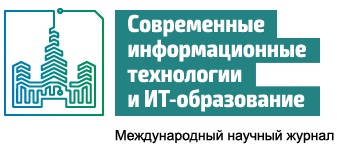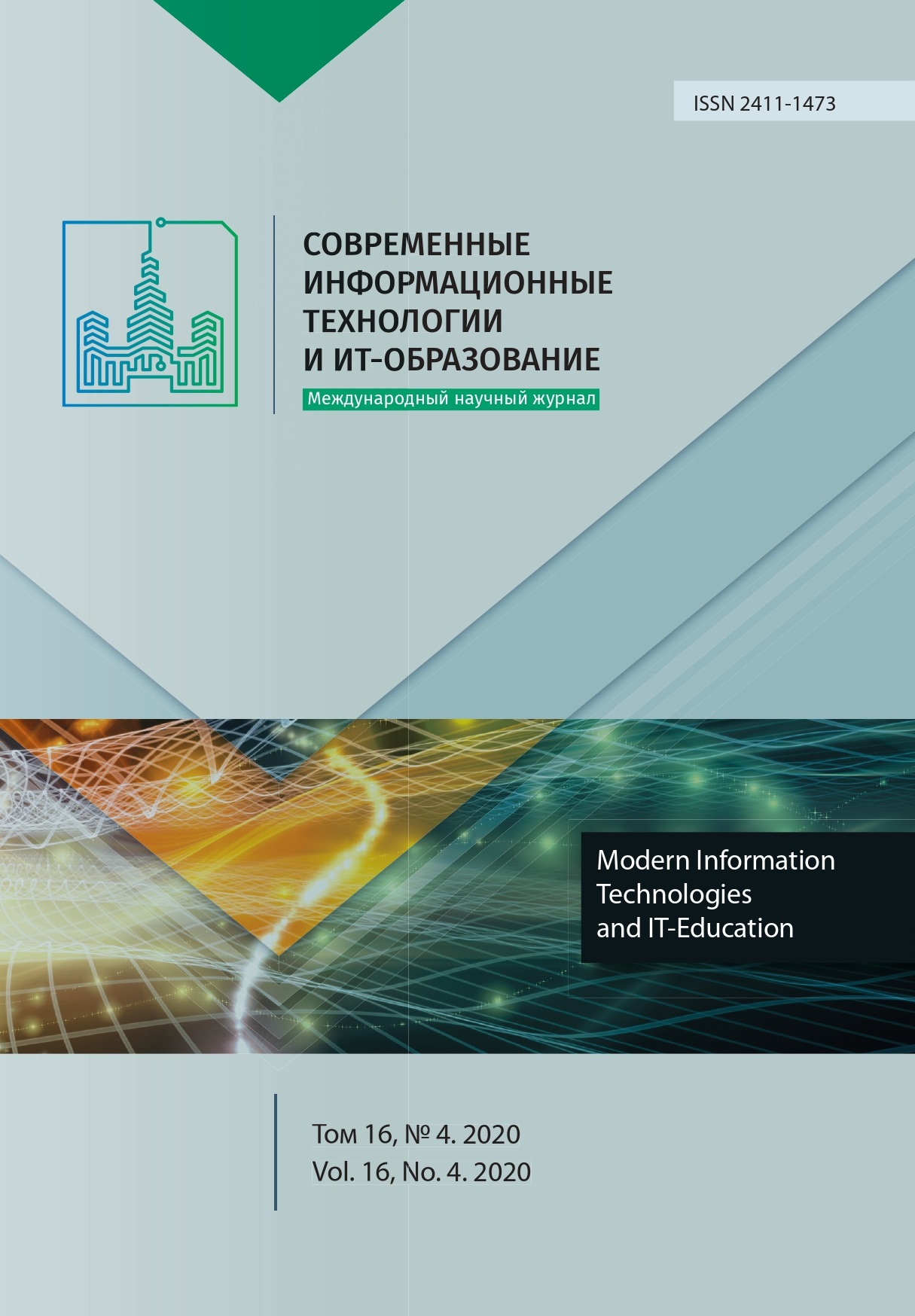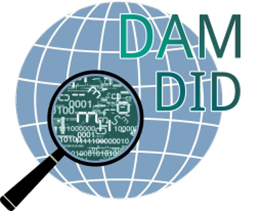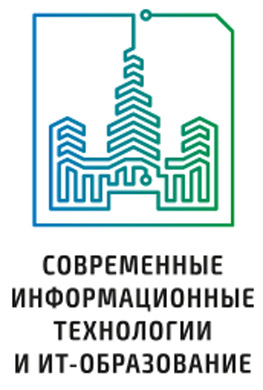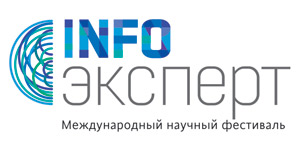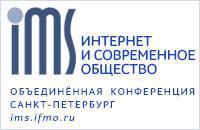Разработка человеко-машинного интерфейса на основе гибридного интеллекта
Аннотация
В статье рассмотрены принципы гармонизации взаимодействий между естественным и искусственным интеллектом в составе эрготехнических систем. Обновленная концепция человеко-машинной системы была разработана в рамках цифровизации управления социально-экономическими системами, имеющими произвольный набор НЕ-факторов, позволяющих их реализовать с помощью мягких моделей. В рамках моделирования такого интерфейса особое значение имеют исследования синергии искусственного интеллекта автоматизированной системы технической составляющей ergo-системы и естественного интеллекта человека-оператора. Показано, что для интерфейса важно требование универсальности, способности выполнять различные задачи управления и его совместимости с рядом функциональных подсистем самого объекта управления - машины. В статье представлена общая структура взаимодействия двойного человеко-машинного интеллекта и объекта, окружающей среды и интеллектуальной системы управления, а также выделены мягкие модели. Это часто позволяет скорректировать действия оператора, которые могут привести к нежелательным последствиям. В статье рассматриваются бионические подходы к концепции гибридного человеко-машинного интеллекта. В статье рассматриваются адаптивные гибридные интеллектуальные схемы управления человеко-машинной системой, вариант их классификации и способ построения. Соответственно, для реализации данного подхода предлагается метод, включающий комбинацию алгоритмов и методов традиционного формально-логического мышления и нечеткой логики.
Литература
[2] Venda V.F. Hybrid Intelligence Systems: Evolution Psychology Informatics. Mashinostroenie Publ., Moscow; 1990. (In Russ.)
[3] Sergeev S.F. Symbionts of intellects in ergatic systems. Scientific and Technical Journal of Information Technologies, Mechanics and Optics. 2013; (2):149-154. Available at: https://elibrary.ru/item.asp?id=18949273 (accessed 28.08.2020). (In Russ., abstract in Eng.)
[4] Wechsler D. Wechsler Adult Intelligence Scale. 4th ed. San Antonio, TX: Pearson Assessment; 2008. (In Eng.)
[5] Khramov V.V., Kramarov S.O., Roshchupkin S.A. The Concept of Functional Connectivity of Measurements of Geo-Informational Space of the Region. Sovremennye informacionnye tehnologii i IT-obrazovanie = Modern Information Technologies and IT-Education. 2020; 16(2):407-415. (In Eng.) DOI: https://doi.org/10.25559/SITITO.16.202002.407-415
[6] Kramarov S., Khramov V. Methodology of Formation of Unite Geo-Informational Space in the Region. In: Sukhomlin V., Zubareva E. (ed.) Modern Information Technology and IT Education. SITITO 2018. Communications in Computer and Information Science. 2020; 1201:309-316. Springer, Cham. (In Eng.) DOI: https://doi.org/10.1007/978-3-030-46895-8_24
[7] Akperov I.G., Khramov V.V. Soft models for assessing the state of information ecology of the unified geoinformation space of a region. In: Conference Proceedings on Innovative technologies in science and education ("ITNO 2020"). DSTU Print, Rostov-on-Don; 2020. p. 29-33. (In Russ., abstract in Eng.) DOI: https://doi.org/10.23947/itno.2020.29-33
[8] Akperov G.I.O., Alekperov I.D.O. Intelligent Information Systems in the Digital Economy Era. IMBL, Rostov-on-Don; 2020. Available at: https://www.elibrary.ru/item.asp?id=43829920 (accessed 28.08.2020). (In Russ., abstract in Eng.)
[9] Akperov I.G., Khramov V.V. Contour identification in the concept of TIN-models of the university information marketing space. In: Proceedings of the International Scientific and Practical Conference on "Transport: Science, Education, Production". RSTU, Rostov-on-Don; 2020. p. 16-20. Available at: https://www.elibrary.ru/item.asp?id=44058350 (accessed 28.08.2020). (In Russ., abstract in Eng.)
[10] Golubenko E.V., Khramov V.V., Romanchenko V.Yu. Satellite monitoring of territories development as an active ergo technical system: architecture and properties. In: Proceedings of the International Scientific and Practical Conference on "Transport: Science, Education, Production". RSTU, Rostov-on-Don; 2017. p. 31-35. Available at: https://elibrary.ru/item.asp?id=32625102 (accessed 28.08.2020). (In Russ., abstract in Eng.)
[11] Maus V., Giljum S., Gutschlhofer J. et al. A global-scale data set of mining areas. Scientific Data. 2020; 7: 289. (In Eng.) DOI: https://doi.org/10.1038/s41597-020-00624-w
[12] Kramarov S.O., Khramov V.V., Mityasova O.Yu. Satellite identification of mineral deposits under open pit mining. Mining Informational and Analytical Bulletin. 2019; (5):72-79. (In Russ., abstract in Eng.) DOI: https://doi.org/10.25018/0236-1493-2019-05-0-72-79
[13] Alekseev V.V., Zaitsev A.V., Lysunkin P.S. The methodology for improving the quality of ergatic element in ergotechnical systems based on artificial intelligence. Reliability and Quality of Complex Systems. 2018; (3):17-22. (In Russ., abstract in Eng.) DOI: https://doi.org/10.21685/2307-4205-2018-3-3
[14] Alekseeev V.V., Korystin S.I., Malyshev V.A., Sysoev V.V. Modelirovanie informacionnogo vozdejstviya na ehrgaticheskij ehlement v ehrgotekhnicheskih sistemah [Simulation of information on the ergatic element in ergo-technical systems]. Stensvil, Moscow; 2003. (In Russ.)
[15] Ignatyev V.V. Adaptive hybrid intellectual control systems. Izvestiya SFedU. Engineering Sciences. 2010; (12):89-94. Available at: https://elibrary.ru/item.asp?id=15553716 (accessed 28.08.2020). (In Russ., abstract in Eng.)
[16] Minitaeva A.M. Human-machine interface organization with intellectualization of person and computer system interaction. Software & Systems. 2013; (3):104-107. Available at: https://elibrary.ru/item.asp?id=21774130 (accessed 28.08.2020). (In Russ., abstract in Eng.)
[17] Khramov V.V. Generacija modelej ob'ektov intellektual'nogo prostranstva. Teorija i ispol'zovanie dlja upravlenija slozhnymi sistemami [Generation of models of objects of intelligent space. Theory and use for managing complex systems]. In: Proceedings of the International Scientific and Practical Conference on Management in Social, Economic and Technical Systems. KUADI, Kislovodsk; 2000. p. 67-68. Available at: https://elibrary.ru/item.asp?id=32737843 (accessed 28.08.2020). (In Russ.)
[18] Narinyani A.S. NE-faktory: kratkoe vvedenie [Non-factors: a brief introduction]. Novosti iskusstvennogo intellekta = News of artificial intelligence. 2004; (2):52-63. (In Russ.)
[19] Knyazeva E.N. Temporal complexity architecture. In: Arshinov V.I. (ed.) The synergetic paradigm. Synergy of innovative complexity. Progress-Tradition, Moscow; 2011. p. 66-86. (In Russ.)
[20] Pavlov V.V., Chezhipenko V.I. The concept of modeling and analyzing the evolution of the technical state of complex technical systems at the maximum possible interval of their life cycle. Cybernetics and Computer Engineering. 2009; (157):3-16. Available at: http://dspace.nbuv.gov.ua/handle/123456789/7645 (accessed 28.08.2020). (In Russ.)
[21] Redko V.G. Models of adaptive behavior and problem of origin of intelligence. Mathematical Biology and Bioinformatics. 2007; 2(1):160-180. Available at: https://elibrary.ru/item.asp?id=11610064 (accessed 28.08.2020). (In Russ., abstract in Eng.)
[22] Khramov V.V. Information assessment of the effectiveness of an intelligent design system in the conditions of uncertainty of the description. In: Proceedings of the International Scientific and Practical Conference on Integration of industry and university science: problems of modern machine-building. Rostov-on-Don; 2001. p. 35-36. Available at: https://elibrary.ru/item.asp?id=36349030 (accessed 28.08.2020). (In Russ.)
[23] Lavrov E., Pasko N., Tolbatov A., Tolbatov V. Ergonomic reserves for improving reliability of data processing in distributed banking systems. In: Proceedings of 2nd International Conference on Advanced Information and Communication Technologies-2017 (AICT-2017). Lviv, Ukraine; 2017. p. 79-82. (In Eng.) DOI: https://doi.org/10.1109/AIACT.2017.8020070
[24] Makarov I.M., Lokhin V.M., Manko S.V., Romanov P.M. Iskusstvennyj intellekt i intellektual'nye sistemy upravlenija [Artificial Intelligence and Intelligent Control Systems]. Nauka, Moscow; 2006. (In Russ.)
[25] Kolmogorov A.N. Three approaches to the definition of the concept "quantity of information". Problemy Peredachi Informatsii = Problems of Information Transmission. 1965; 1(1):3-11. (In Russ.)
[26] Vyugin V.V. Kolmogorovskaja slozhnost' i algoritmicheskaja sluchajnost' [Kolmogorov complexity and algorithmic randomness]. MIPT: IPPI RAS, Moscow; 2012. Available at: http://iitp.ru/upload/publications/6059/vyugin_kolm.pdf (accessed 28.08.2020). (In Russ.)
[27] Khramov V.V. Using the paradigm of self-organization to describe information processes in ergatic systems. In: Transport-2002: Proceedings of the scientific and theoretical conference. RSTU, Rostov-on-Don; 2002. Available at: https://www.elibrary.ru/item.asp?id=32653111 (accessed 28.08.2020). (In Russ., abstract in Eng.)
[28] Khramov V.V. The concept of ensuring the effectiveness of organizational and technical systems based on the bionic-intellectual approach. Vestnik Rostovskogo Gosudarstvennogo Universiteta Putej Soobshcheniya. 2001; (2):138-141. Available at: https://www.elibrary.ru/item.asp?id=11713661 (accessed 28.08.2020). (In Russ.)
[29] Khramov V.V. Theoretical foundations of the methodology for the synthesis of information objects ESVN. In: Proceedings of the scientific conference on Problems of ensuring the efficiency and stability of the functioning of complex technical systems. VARVSN, Serpukhov; 2002. p. 124-128. Available at: https://www.elibrary.ru/item.asp?id=32877394 (accessed 28.08.2020). (In Russ.)
[30] Khramov V.V., Gvozdev D.S. Intellektual'nye informacionnye sistemy: intellektual'nyj analiz dannyh [Intelligent Information Systems: Data Mining]. RSTU, Rostov-on-Don; 2012. Available at: https://www.elibrary.ru/item.asp?id=32762296 (accessed 28.08.2020). (In Russ.)
[31] Khramov V.V., Tscarkov A.N. Modeling of information processes in ergatic systems based on the principles of self-organization. In: Proceedings of the scientific conference on Problems of ensuring the efficiency and stability of the functioning of complex technical systems. VARVSN, Serpukhov; 2003. p. 444-447. Available at: https://www.elibrary.ru/item.asp?id=32760882 (accessed 28.08.2020). (In Russ.)
[32] Khramov V.V., Tscarkov A.N. Features of information metabolism in human-machine systems. In: Proceedings of the scientific conference on Problems of ensuring the efficiency and stability of the functioning of complex technical systems. VARVSN, Serpukhov; 2003. p. 437-440. Available at: https://www.elibrary.ru/item.asp?id=32759920 (accessed 28.08.2020). (In Russ.)
[33] Lindenbaum, T.M. Vvedenie v informacionnuju jekologiju: tehnologicheskie predposylki [Introduction to Information Ecology: technological prerequisites]. In: Proceedings of the International Scientific and Practical Conference on "Actual Problems and Prospects for the Development of Transport, Industry and Economy in Russia". RSTU, Rostov-on-Don; 2020. p. 136-140. (In Russ.)

Это произведение доступно по лицензии Creative Commons «Attribution» («Атрибуция») 4.0 Всемирная.
Редакционная политика журнала основывается на традиционных этических принципах российской научной периодики и строится с учетом этических норм работы редакторов и издателей, закрепленных в Кодексе поведения и руководящих принципах наилучшей практики для редактора журнала (Code of Conduct and Best Practice Guidelines for Journal Editors) и Кодексе поведения для издателя журнала (Code of Conduct for Journal Publishers), разработанных Комитетом по публикационной этике - Committee on Publication Ethics (COPE). В процессе издательской деятельности редколлегия журнала руководствуется международными правилами охраны авторского права, нормами действующего законодательства РФ, международными издательскими стандартами и обязательной ссылке на первоисточник.
Журнал позволяет авторам сохранять авторское право без ограничений. Журнал позволяет авторам сохранить права на публикацию без ограничений.
Издательская политика в области авторского права и архивирования определяются «зеленым цветом» в базе данных SHERPA/RoMEO.
Все статьи распространяются на условиях лицензии Creative Commons «Attribution» («Атрибуция») 4.0 Всемирная, которая позволяет другим использовать, распространять, дополнять эту работу с обязательной ссылкой на оригинальную работу и публикацию в этом журналe.
